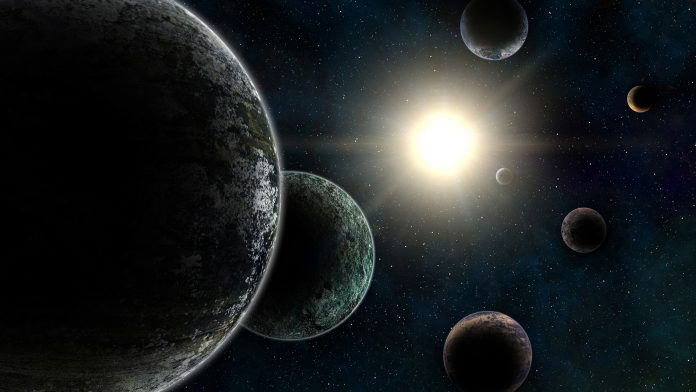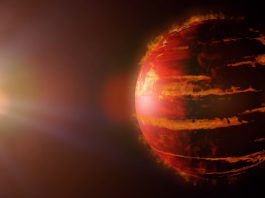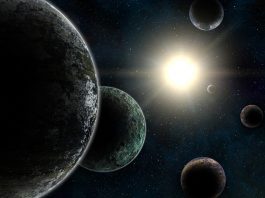The CHEOPS space telescope has discovered six planets orbiting the star TOI-178. Five of the planets are in a harmonic rhythm despite very different compositions.
A planetary system can also form a harmony when planets, whose orbital period ratios form simple fractions, regularly attract each other with their gravity. When one planet takes three days to orbit its star and its neighbour takes two days, for example. Using the CHEOPS space telescope, scientists from the University of Bern, the University of Geneva, and the National Center of Competence in Research PlanetS, found such relationships between five of six planets orbiting the star TOI-178, located over 200 light-years away from Earth.
Astrophysicist Adrien Leleu of the Center for Space and Habitability of the University of Bern said: “This result surprised us, as previous observations with the Transiting Exoplanet Survey Satellite (TESS) of NASA pointed toward a three planets system, with two planets orbiting very close together. We therefore observed the system with additional instruments, such as the ground-based ESPRESSO spectrograph at the European Southern Observatory (ESO)’s Paranal Observatory in Chile, but the results were inconclusive.”
As published in the journal Astronomy and Astrophysics, when Leleu and his colleagues first proposed to investigate the system more closely, they were not sure what they would find. The high precision and target-pointing agility of CHEOPS was required to bring clarity, but that turned out to be more difficult than expected. Leleu explained: “After analysing the data from 11 days of observing the system with CHEOPS, it seemed that there were more planets than we had initially thought.”
Unveiling the sixth planet
The team identified a possible solution with five planets and decided to invest another day of precious observation time on the system to confirm. They found that there were indeed five planets present with orbital periods of around 2, 3, 6, 10 and 20 days, respectively.
Leleu and his colleagues noticed that the system appeared to be in harmony. “Our theory implied that there could be an additional planet in this harmony; however, its orbital period needed to be very nearly 15 days,” Leleu added. To test their theory, the team scheduled another observation with CHEOPS, at the exact time that this missing planet would pass by – if it existed. But then, an accident threatened to cancel their plans.
Co-author and Professor of Astrophysics at the University of Bern, Yann Alibert added: “Just before the time of the observation, a piece of space debris threatened to collide with the CHEOPS satellite.”
The control centre of the European Space Agency (ESA) initiated an evasive manoeuvre of the satellite and all observations were interrupted. Nathan Hara, co-author and astrophysicist from the University of Geneva reports: “A few days later, the data clearly indicated the presence of the additional planet and thus confirmed that there were indeed six planets in the TOI-178 system.”









